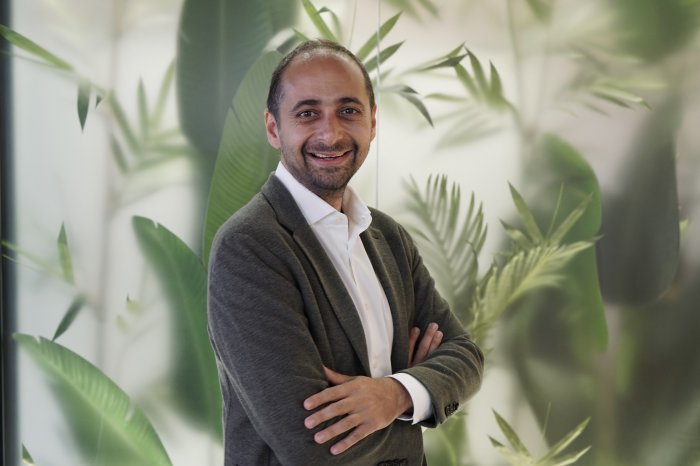
Sustainable construction could turn the Gulf’s $2 trillion construction boom into 4.3 million annual jobs and reduce emissions by 60%
With the upcoming COP 28 set to be hosted in the United Arab Emirates, and as the region intensifies its focus on its net-zero targets, sustainability-focused construction technologies are poised to play a crucial role. According to the latest research by Strategy& Middle East, part of the PwC network, and the planning, design, management and consultancy, Dar, sustainability-focused construction technologies could help the MENA region’s $2 trillion construction surge reduce lifecycle emissions by 50-60%. The report suggests that the region has the potential to become a global leader in the use of innovative and sustainability-focused construction technologies as it invests up to $2 trillion in new ‘built environments’ by 2035. Citing mega-projects such as the NEOM futuristic city in Saudi Arabia and Qatar’s planned Lusail entertainment city, the report also suggests sustainable technologies could take the region halfway to achieving its net-zero emissions goals. The ‘built environment’ refers to human-made surroundings that provide the setting for human activity, including buildings, neighborhoods, and cities, alongside their supporting infrastructure systems such as water supply and energy networks. Processes involved in developing new built environments include urban planning, real estate, construction, and operating assets – all of which could utilize innovative and sustainability-focused methods and technologies.
The report also estimates that the scale of the region-wide construction boom could deliver a substantial economic impact, representing just over 10% of GDP for the region annually, as well as creating 4.3 million jobs per year, if the recommendations outlined in the report are implemented. “The GCC region’s planned scale of investments uniquely positions it to pioneer a range of sustainable technologies and processes. Overall, the built environment is responsible for a high emissions footprint of around 37 percent of energy use, 39 percent of CO2 emissions, and 40 percent of material use globally, said Dr. Yahya Anouti, Partner with Strategy& Middle East and the leader of the sustainability platform at PwC Middle East. “Our estimates show that a reduction in these emissions for urban development could take the region more than halfway to realizing its net-zero emissions goals,” he added. The good news for planners and developers is that some of the technologies and innovations needed to rethink the built environment already exist and can be implemented in the near term, such as solar photovoltaics, greener construction material and artificial intelligence (AI) enabled systems in buildings. However, the report indicates that other innovations
are nascent and require additional investment and time to develop, test, and integrate. “If GCC stakeholders – including policymakers, innovators, and developers – embrace a truly innovative and sustainable approach to urban development, they face a golden opportunity to set a new global standard. From urban planning to architecture, civil engineering, mechanical systems, and construction materials, sustainable development can unlock deliver widespread better quality of life, incremental economic growth, and develop local skills and jobs,” said Balsam Nehme, Head of Sustainability, Dar Al-Handasah. The Strategy& and Dar report points out that the sheer scope of the changes necessary to fully capture the $2 trillion opportunity has significant implications for stakeholders in the built environment. Regulators would need to play a role in stimulating demand for the technologies, including through the inclusion in green building codes. Developers would need to embracesustainable construction techniques and may want to set specific goals, such as emission reduction targets. Sovereign wealth funds and other financiers are essential to jump-start and drive the transition, potentially by setting net-zero aspirations for the developments they are financing. Collaboration is required among all stakeholders, and their success depends on sharing lessons learned from pilots and trials to drive the adoption of sustainable practices and innovations. “Our research examines over 50 innovations that can shift the paradigm towards sustainable built environments, substantially reducing emissions from both embodied and operational carbon. These innovations encompass a variety of passive measures, including the design of buildings, as well as active measures, such as more efficient electrical and mechanical systems,” said Sarah Al Feghali, the moonshots and innovation lead of the Ideation Center at Strategy&. “Additionally, several measures can be implemented to support policymakers in their planning decisions, while aiding developers in addressing the opportunities associated with the region's built environment aspirations,” she added. Built Environment Recommendations for Sustainable Development The report from Strategy& and Dar provides 17 high-potential and actionable applications across multiple areas to reduce emissions. These include areas such as mobility, managed landscapes, development density, mechanical systems, and construction processes. Five notable examples include:
- Wastewater: Wastewater can easily be treated at the site of generation, which reduces greenhouse gas (GHG) emissions by nearly 90 percent and decreases energy consumption from pumping water to the treatment site.
-Sustainable pathways: Recycled roads and pathways can reduce embodied carbon by more than 90 percent—and can be half as costly as traditional asphalt roads and require less. energy for their production.
-‘Living roofs’: Also known as “vegetated” or “living” roofs, green roofs can make roof surfaces 30 to 40 percent cooler. They have the added benefit of retaining stormwater, which is particularly important in the MENA region.
-Modular assembly: Designing for modular assembly can reduce embodied carbon emissions by more than 19 percent over the lifetime of the built asset.
-Active facades: In very hot countries, dynamic façades change in response to the surrounding environment. They can increase the amount of useful daylight directed to buildings while allowing energy savings of up to 55 percent.




























